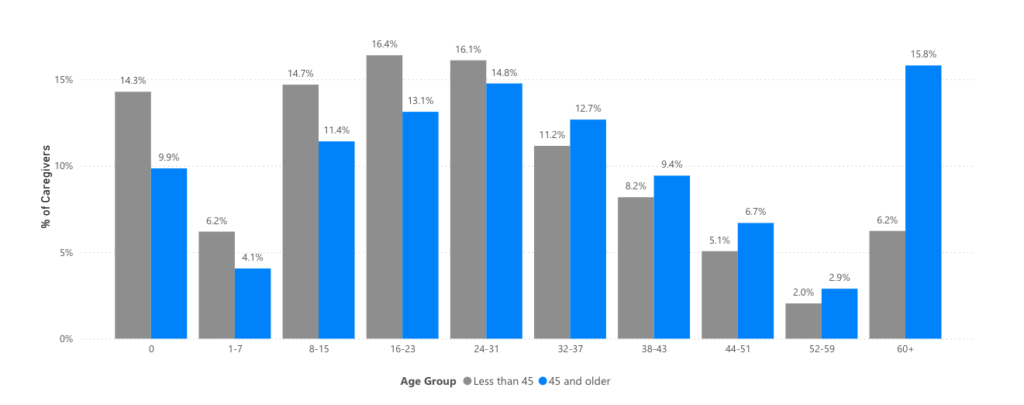Home Care Insights: Deep Dive
Caregiver Workforce Trends by Age
Addressing the Shifts in Recruitment, Engagement, and Retention
In recent months, the caregiver workforce has experienced a notable shift. While the number of available shift hours continues to rise, the growth in caregiver supply has slowed down significantly. This widening gap between supply and demand can potentially exacerbate the already critical caregiver shortage, leading to a higher number of unfilled shifts.
Deep Dive
To get a better idea of what drives the current state of the market, we looked at caregiver workforce trends by age and how they affect recruitment, retention and engagement. To a high level, our findings show that agencies are not handling a shift in caregiver demographics very well.
When looking at the changes in Caregiver supply, we are seeing that younger Caregivers (age groups 25-34 and 35-44) are starting to join the workforce at a higher rate than older Caregivers (65+) are leaving. This is a positive sign that shows that the overall size of the workforce should continue to grow as older caregivers retire.
Data last updated August 14, 2024

This graph shows the change in the active caregiver pool by different age bands.
However, the flip side is that it is becoming even more critical that agencies engage and retain these younger caregivers. Based on our current data, we can see that they are currently doing a poor job of this. If these trends continue, we will likely see younger caregivers exit the workforce as quickly as they are joining.
Our data shows that caregivers over 45 years old tend to work more hours per week than those under 45, especially in the 60+ hours range.
Data last updated August 14, 2024

Additionally, younger caregivers are not provided the same working opportunities as older caregivers. On average, they are being invited to shifts slightly less than older caregivers. They are also requesting more shifts, but as shown above, that isn’t translating into more work hours for them.
Data last updated August 14, 2024

These graphs compare the average shift invitations received, and shifts requested through the CareConnect platform by caregivers under and over 45 years old.
This ultimately leads to poor retention among the younger age group compared to older caregivers. Until they are given more opportunities to work more hours consistently, we will likely see this trend continue.
Data last updated August 14, 2024

This graph compares the 90-day retention rate of caregivers of different ages.
This shift towards a younger caregiver pool will become a larger and larger issue for agencies over time unless they make a concerted effort to get these younger caregivers working. Without doing so, it will lead to more turnover, more unfilled shifts, and ultimately patient care will suffer.
The growing proportion of younger caregivers in the workforce presents both a challenge and an opportunity for home care agencies. To retain these younger workers, agencies must prioritize caregiver engagement by offering competitive opportunities, proper onboarding, and continuous support and recognition throughout their employment. Without focusing on caregiver engagement, turnover will continue to increase, leading to more unfilled shifts and compromising patient care.
For home care agencies, the time to act is now. Agencies that adjust their strategies to engage younger caregivers better not only mitigate the risk of turnover, but also build a stronger, more reliable workforce and position themselves for long-term success in a rapidly evolving industry.
